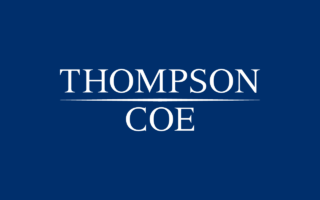The Dilemma of Extrinsic Evidence
Dec 6, 2001
One of the hottest topics in Texas liability insurance law today concerns whether and under what circumstances an insurer (or insured) can use evidence extrinsic to the pleadings against an insured to escape (or establish) a duty to defend. Two recent Fifth Circuit cases illustrate that not only are different courts taking different positions on the subject, but individual courts are not always consistent in the rules they apply. In Guaranty National Ins. Co. v. Azrock Industries, Inc., 211 F.3d 239 (5th Cir. 2000), the court prohibited the use of extrinsic evidence to affect an insurer’s defense duty. However, in Harken Exploration Co. v. Sphere Drake Insurance PLC, 261 F.3d 466 (5th Cir. 2001), the same court allowed the use of extrinsic evidence to impose a duty to defend on the insurer.
Azrock involved underlying claims for personal injuries caused by exposure to products containing asbestos. The district court absolved the carrier of its duty to defend certain lawsuits against the insured where the underlying pleadings alleged that the plaintiffs were diagnosed with asbestos-related health problems outside the insurer’s time on the risk. The Fifth Circuit, however, rejected the district court’s application of a “manifestation” trigger to the underlying claims and adopted an “exposure” trigger instead. In the course of its analysis, the Fifth Circuit strictly applied the “eight-corners” rule, under which an insurer’s duty to defend is determined by reference only to the allegations in the pleadings and the language of the insurance policy. The Fifth Circuit remanded the case to the district court with instructions to examine the underlying pleadings to determine whether they alleged potential exposure (in this case, employment by the insured) during the insurer’s time on the risk.
Interestingly, the Azrock court stated that “[t]o the extent that the parties challenge that general premise [i.e., that exposure necessarily equated to actual injury in fact] on the basis of the particular type of asbestos product or fiber involved, its effect on an individual plaintiff, or other grounds, those factual disputes are relevant not to the duty to defend – determined under the eight-corners doctrine – but perhaps to the duty to indemnify or as a causation defense to the underlying liability suits.” The Azrock court essentially held that the existence of a duty to defend on the part of the insurer was determined by whether the underlying petitions alleged employment inside or outside of the policy dates. Further, with regard to those pleadings where no dates of exposure were given at all, the court stated that the insurer was not obligated to defend those cases because, under the eight-corners rule, the court could not read facts into the pleadings or go outside the pleadings.
Harken concerned an insurer’s duty to defend its insured in connection with underlying pollution claims resulting from oil and gas operations. Among other things, the Fifth Circuit addressed the issue of whether some of the pollution potentially took place during the insurer’s time on the risk. The underlying pleading alleged a continuous succession of oil leaks and releases resulting from the insured’s conduct, including occasions after February 1997. The policy at issue was effective from late 1995 through late 1996.
The Fifth Circuit concluded that the allegations with regard to oil leaks on numerous occasions, including occasions after February 1997, presumed that some, if not most, of the harm occurred before February 1997. The pleading did not contain any allegations with regard to when the insured purchased the lease in question or began operating at the site. Extrinsic evidence, however, indicated that the insured had purchased the lease on December 15, 1995. The insurer contended that the court could not consider when the insured purchased the lease because such evidence was extrinsic to the pleadings.
The Fifth Circuit rejected this argument, relying on Western Heritage Ins. Co. v. River Entertainment, 998 F.2d 311, 313-15 (5th Cir. 1993), which held that when a petition does not contain sufficient facts to enable a court to determine if coverage exists, it is proper to look to extrinsic evidence in order to address the issue. Because the extrinsic evidence indicated that the insured purchased the lease in 1995, and was therefore operating at the site during the insurer’s time on the risk, the insurer was under a duty to defend. In adopting this approach, the Fifth Circuit reached a result that is arguably inconsistent with at least one prior Fifth Circuit case, which it did not cite. See Gulf Chemical & Metallurgical Corp. v. Associated Metals amp; Minerals Corp., 1 F.3d 365, 370-71 (5th Cir. 1993) (holding insurer obligated to defend despite extrinsic evidence indicating no possibility of damage during the policy).
While there is no indication in the Azrock opinion that either side attempted to use extrinsic evidence to resolve the duty to defend issue, the court’s approach in Azrock seems inconsistent with its approach in Harken. This inconsistency is not limited to the federal courts. The Texas Supreme Court has stated that an insurer’s duty to defend is determined solely by the allegations in the pleadings against the insured. There are Texas cases, however, that condone the use of extrinsic evidence under various circumstances. The Texas Supreme Court has not recently been presented with a case that calls upon it to definitively resolve the issue of whether, and under what circumstances, an insurer (or an insured for that matter) can use extrinsic evidence to influence the outcome of the duty to defend issue.
Until the issue is resolved by the Texas Supreme Court, insurers should look for opportunities to use extrinsic evidence to resolve the duty to defend question. Insurers should take care, however, that the content of the extrinsic evidence is known prior to asserting the argument. The use of extrinsic evidence can obviously become a two-way street, in which the insured uses extrinsic evidence to impose a duty to defend on the insurer where a duty would not otherwise exist based on the pleadings alone.







